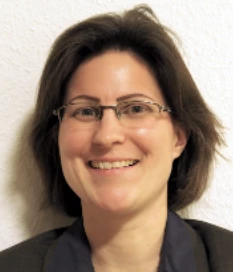Welcome
Welcome to the April edition of the Zemax’s Community review newsletter! This newsletter provides updates for you, the user, on items you might find interesting or helpful from the last month! Check out each of these items below:
Is there something else you’d like to see? Let us know in the comments below!
Featured Community Posts: Mathematica
In OpticStudio 22.1 Mathematica templates have been added to support Mathematica users when using ZOS-API. Since this, we have seen questions popping on the forum so if you are a Mathematic user, have a look as there might be the answer that you are looking for:
Knowledgebase Updates
- Automated recurring documentation for optical designs with ZOS-API and LaTeX – Knowledgebase by
@Karen This article will explain how to automate the documentation of optical designs with ZOS-API and LaTeX. An example for a comparison of 2 systems with 8 different evaluation graphics is given.

Our Japanese Knowledgebase now features a larger collection of translated articles! Our Japanese Community Manager put together a list of some of his favorites below!
- OpticStudio による DOE レンズまたはメタレンズの設計方法 by
@Michael Cheng この記事では、OpticStudioを使用して回折光学エレメント (DOE) とメタレンズを設計するプロセスを簡単に紹介します。位相プロファイルとローカル グレーティングの概念を取り上げます。添付資料では、特殊な DOE またはメタレンズの設計手法に効果的な DLL のいくつかについても説明しています
- 拡張現実 (AR) 用ホログラフィック導波光学系のモデル化 : 第 1 部 by
@Sean.Lin &@Michael Cheng AR 光学系では、ディスプレイ エンジンから装着者の目まで光を伝送する導波光学系に光を結合するためにホログラムが広く使われています。この記事では、平面導波構造への入射結合光学系として、OpticStudio でホログラム面を使用する方法について解説します。
- 拡張現実 (AR) 用ホログラフィック導波光学系のモデル化 : 第 2 部 by
@Sean.Lin &@Michael Cheng AR 光学系では、しばしばホログラムを使用して、光を導波光学系に結合します。この記事では、2 部構成の本シリーズ第 1 部でモデル化したシンプルな設計を改良する方法を紹介します。
Zemax-er Spotlight: Dr. Helke Karen Hesse

Our Zemax-er spotlight this month is
Tell us about yourself
I have been working for about 13 years in optical industry as an optical designer. After 7 years in two different companies, I started my own business as an optical consultant, and have been working in a variety of projects ever since. From the design of a large flight simulator mirror optics, over riflescopes, VR and HMD systems, objective lenses for laser material processing to illumination optics - there is a broad range in different applications that I work on.
What industry trends are you excited about?
Solving optical design problems means encountering new challenges with every project. With the continuously evolving technology, creative solutions become possible, new ideas can be developed. Optical design means to learn something new nearly every day.
If you could offer one piece of advice to someone using OpticStudio, what would it be?
I would probably give the same advise that I got at the very beginning: If you have a powerful tool like Optics Studio at hand, you need to understand why it does what it does. If a result seams strange - that's not a matter of the software, but a matter of how to use the software.
What contributions have you made to Zemax in the past that others should know about?
There is a recent article on the combination of ZOS-API and Latex for the automated generation of documentations.
If you have contributed a Knowledgebase article, what is it about? Who will benefit most from reading it?
The above mentioned article is of interest for everyone who has to generate similar extensive documentations on a regular base.
What's the most challenging problem you've addressed with the help of OpticStudio?
That's a difficult question, because each problem is different and can hardly be compared to another. A problem that took me quite some time was the simulation of a very complex interferometer. Another problem was about writing a customized code fo getting a prescribed illumination distribution with biconic aspheres. But the complexity was more on the theoretical and mathematical side, not on the Optics Studio side.
What do you enjoy most about the Zemax Community/forums?
I think that most of the problems which are encountered somewhere during optical design, have been already faced by someone else. And this is exactly what the community is good for: To find a quick solution to a problem, or to get ideas how to approach a problem.




